E and F troubles
I came to the church with the intention of seeing if I can fix difficult action of the E and F keys in the 1st octave of the 1st manual. This problem bothered me and other organists for quite a while. At first I thought E and F keys would stick because maybe there is something stuck between them deep under the manual. And the only way seeing this is to disassemble several keys and their action around them. I thought it could be done but I need to have ample time and quiet space. Since Ausra was coming to practice with me in the afternoon I thought I would investigate this situation today.

I removed the panel which holds the music rack in place and switched clothes. I have this new blue work jumpsuit which I decided to try today. It fit my size well but it was a little tight across my chest, I thought. However, it protects my good clothes from dust.
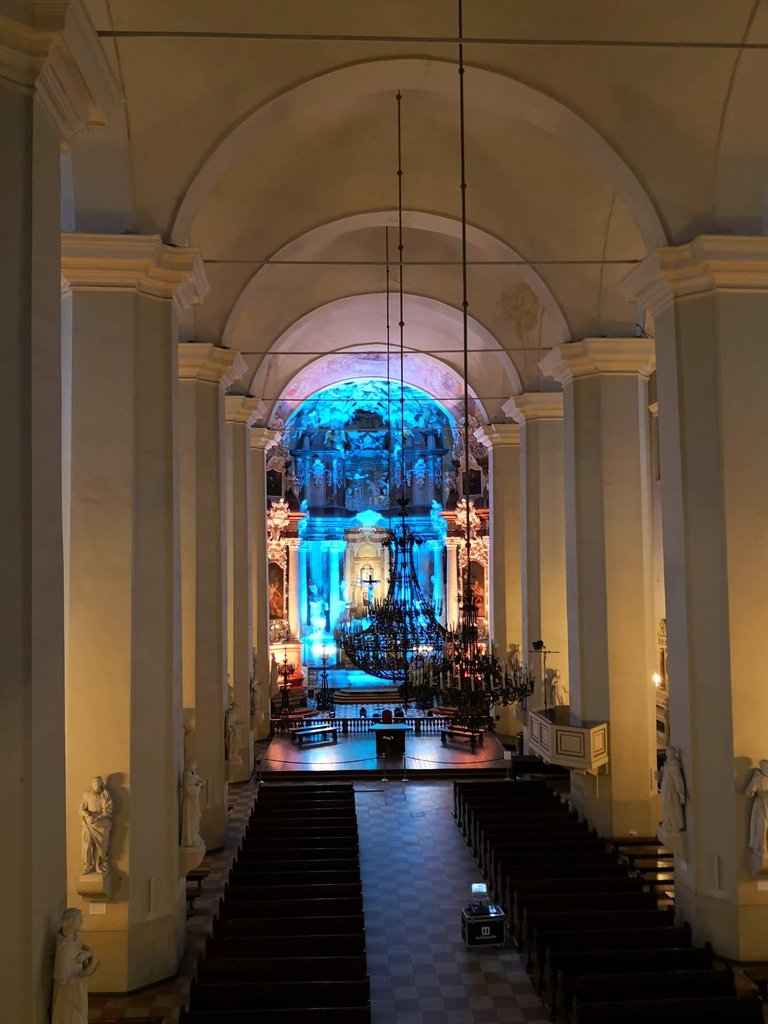
I went inside of the organ and crawled into position where the manuals are located. It was relatively well it but I also used the torch function on my phone to have even better lighting.
There I saw I needed to unscrew 16 screws in order to remove some elements of the keyboards. But I saw something more - I need to remove ALL of the keys and their trackers to get inside of the 1st manual. This seemed very risky to me. Not only because it would take considerably more time to disassemble 56 keys on each manual instead of maybe 7 or 8. Moreover, I didn't know what I would find inside the 2nd manual, when I removed the 3rd one. The mechanics seemed very complex to do it all by myself. It seems I'm only qualified to tune and regulate the mechanics without doing some major repair.
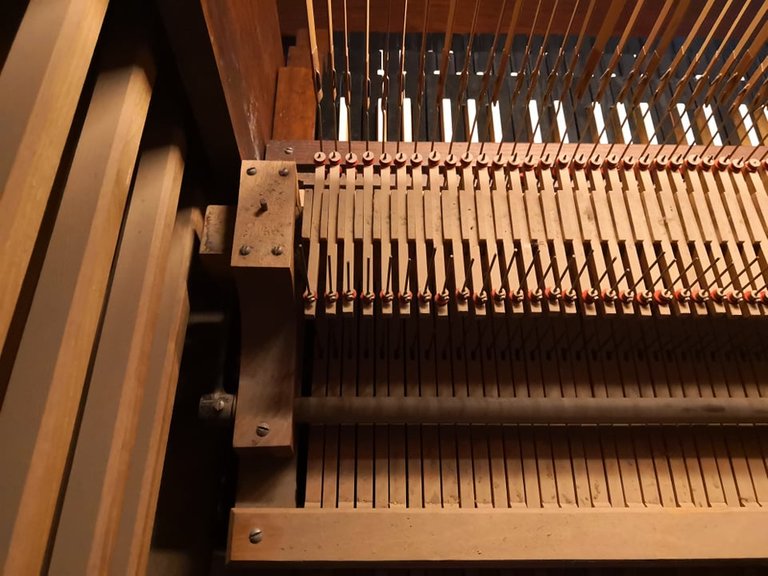
All I could do now was to see how E and F keys behave if I loosen up the springs a little bit. By the way, I strengthened the springs when I first encountered sticky E and F keys, hence their action is harder now.
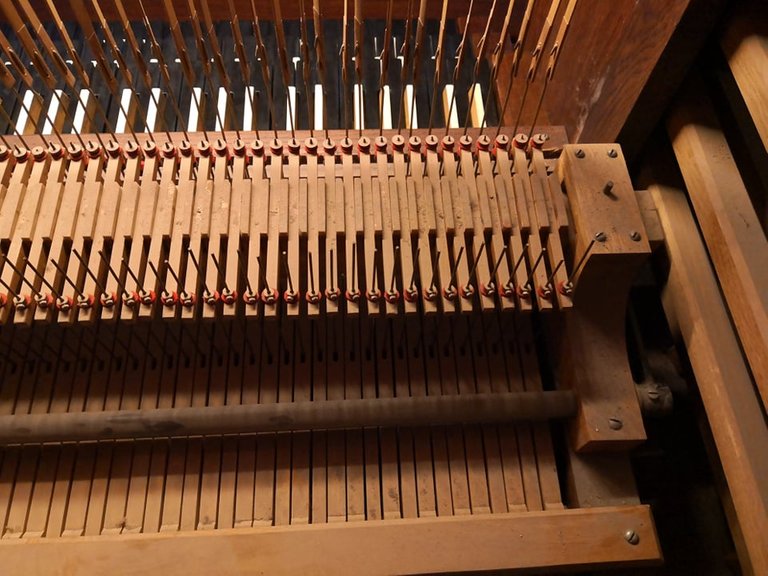
So I put the panels back into place, grabbed some additional light and turned off the organ blower. Then I climbed the ladder leading to the 1st manual pipework, plugged in my light next to the windchest and unscrewed 4 bolts which hold it into place. This was the C# side of the organ which meant I was looking for F ventil first, There it was. Now I was lying on the floor and putting my left hand into the winchest and trying to remove the spring. Removing is much easier than inserting it back in, by the way, because I didn't have special scissors that are suited for this purpose. I had to do it all with my hands only. So when the spring was in my hands, I pressed it considerably to make the action of the key easier. Putting it back required some thinking. I first put the upper end into place and then the lower end. It wasn't a very long process.

Now I tried out how the ventil works inside the windchest and sure enough it was a bit easier to move it with my fingers. I then put back the lid of the windchest and fastened the 4 bolts.
I did the same procedure on the C side of the organ where the E ventil was located. This side took a little longer and the E ventil now works almost like any other key. When this was done, I needed to try it out with some stops drawn out and organ blower working.
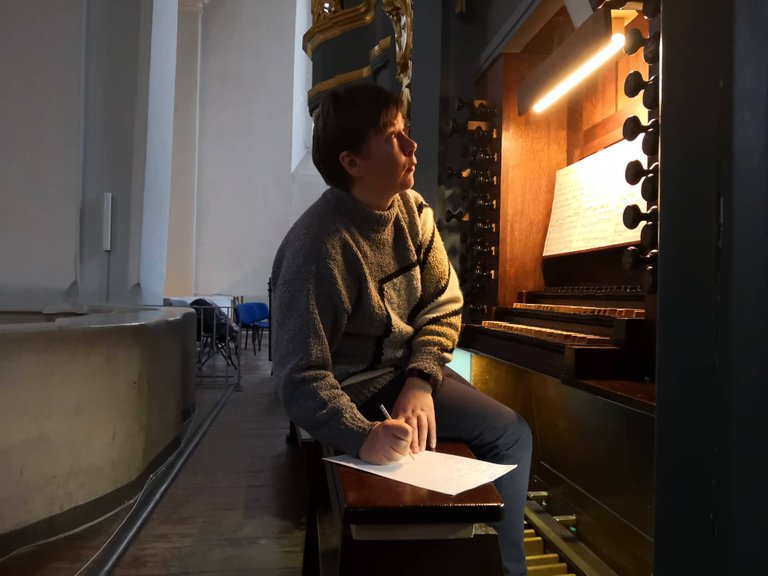
What can I say? Yes, E and F keys are easier to play now but the F key sometimes has this lazy feeling and might stick producing a cipher. I played my 2 "Nun komm" chorale preludes afterwords (BWV 660 and BWV 661) just to be sure how to adjust my manual technique around those two keys. It appears with the E key, everything is almost back to normal but with the F key, a little more strength and precision is needed. What will @laputis say?
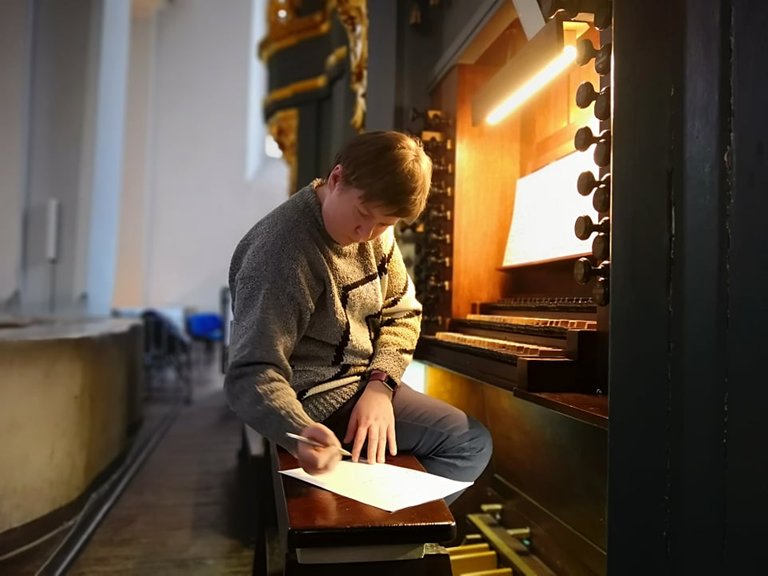
When she came here to practice after lunch, she did notice the difference, especially on the chorus of "Wachet auf" cantata by Bach. It was a pleasant experience and we even recorded out duet practice of the aria "Schlafe, mein liebster" from Christmas Oratorio. Not sure about @laputis, but when I played my part "Schlafe, mein Lobster" image swirled through my mind.


You have received a 26.73% upvote based on your stake of 17805.24959703 UFM! Votes today: 1
Wow! 😲 It will be interesting to try E and F keys during Unda maris rehearsal
Posted using Partiko Android
Tomorrow!
Posted using Partiko Android
Looking good in your jumpsuit!
Posted using Partiko Android
Wow that’s risky doing some repairs before the recital. I hope it goes well. Maybe you can sample your organ so I can play it with Hauptwerk? Or I could just fly there...
Posted using Partiko iOS
Yes, it is too risky. I'm not an organ builder even though I know about organ construction more than an average organist. It's better to know my limits.
@alliedforces curate 2
Keep up the great work and join us in The Castle sometime!
The #spreadlovenotwar curation campaign is under the guidance of witnesses @enginewitty and @untersatz.